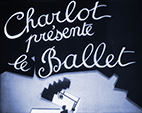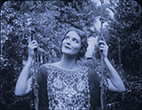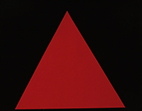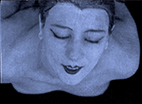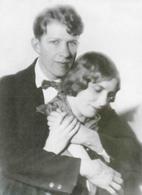Ballet Mechanique - #1 - 2K digital restoration 2015 - Fernand Léger, Dudley Murphy
- Unseen Cinema Collection |
- 1923-1924 |
- 17 minutes |
- COLOR/B&W |
- SOUND
Rental Format(s): Digital File
Alternate titles: Ballet mécanique, Images Mobile
Co-makers: Fernand Léger, Dudley Murphy
Assisted by Ezra Pound, Man Ray, Charles Delecommune
Photography: Dudley Murphy, Man Ray, Ezra Pound.
Production assistance: Étienne Lallier, Otto G. Karlson
Original format: 35mm silent film 1.33:1 various projection speeds
Restoration 2K DPX 10bit LOG from 35mm preserved 2015 by Bruce Posner at ALPHA-OMEGA digital with EYE Film Institute Netherlands and Film Preservation Associates.
Featuring Kiki (Alice Prin), Katherine Hawley Murphy, Dudley Murphy, and Fernand Léger
Original music 1925 by George Antheil "Ballet pour instruments mécaniques et percussions," adapted and arranged 2001, 2015 by Paul D. Lehrman.
Courtesy: Frederick and Lillian Kiesler, G. Schirmer, Inc., Estate of George Antheil, Charles Amirkhanian, Paul D. Lehrman, and Bruce Posner
Techncial note: 35mm full frame and centered 2K scans, missing frames and sequences replaced, many digital repairs, and addition of metallic blue color tint per William Moritz's Desutches Filmmuseum restored version and with single 35mm color frames interpolated per Filmmuseum Münchner Stadtmuseum restored version based on Filmliga vintage 35mm nitrate print at EYE Filmmuseum, Amsterdam.
This sprightly collage of machinery, everyday objects, and prismatic shapes was long described as a typically Cubist film. Now shown in a version perhaps matching the 1924 print screened at the Vienna premiere, with the music originally composed for it, the film's aggressive Dada spirit also becomes clear. -Deke Dusinberre
The abstract film is an invigorating inquiry into the nature of cinema and visual perception in the guise of unfettered play. One of the first films to be acclaimed as avant-garde, Ballet mécanique presents an exuberant, determinedly low-tech fantasia on the machine age-whirling pastry whisks, pumping pistons, and all. -Susan Delson
The film approaches a new form of visual music based upon object identification and then veers off into a profound new direction based upon randomly ordered variations of montage rhythms in time. -Bruce Posner
The music is scored for eight percussionists, two pianists, bells, siren, airplane propellers, and sixteen player pianos. It eschews conventional forms, instead creating a unique "soundscape." Due to technical limitations related to synchronization, this complex composition was never played in its original instrumentation, alone or with the film. -Paul D. Lehrman
A pioneer of cubism and abstract art, Fernand Léger (1881-1955) emerged from the First World War enamored of the so-called machine aesthetic wherein the visual spectacle of modern life was the essential subject for modern painting. He also wrote about cinema, and in Ballet mécanique, used rapid editing and the close-up to find visual drama and formal beauty in machine parts and functional objects. -Matthew Affron
Boston-born Dudley Murphy (1897-1968) was an engineering student, World War I pilot, and movie set decorator before launching his directing career with a series of evocative short films including the first American avant-garde film to be screened in New York City, The Song of the Cypress (1921). These musically driven experiments culminated in the jazz-infused Ballet Mecanique, and influenced his later Hollywood and independent features, including The Emperor Jones (1933). -Susan Delson
American composer-performer George Antheil (1901-1959) went to Europe from New Jersey in 1922. His outrageous piano concerts featuring his avant-garde compositions made him "the toast of Paris." However, a failed New York performance of Ballet mécanique in 1927 ruined his reputation. After 1935, he emerged as a respected composer for Hollywood films. -Paul D. Lehrman


